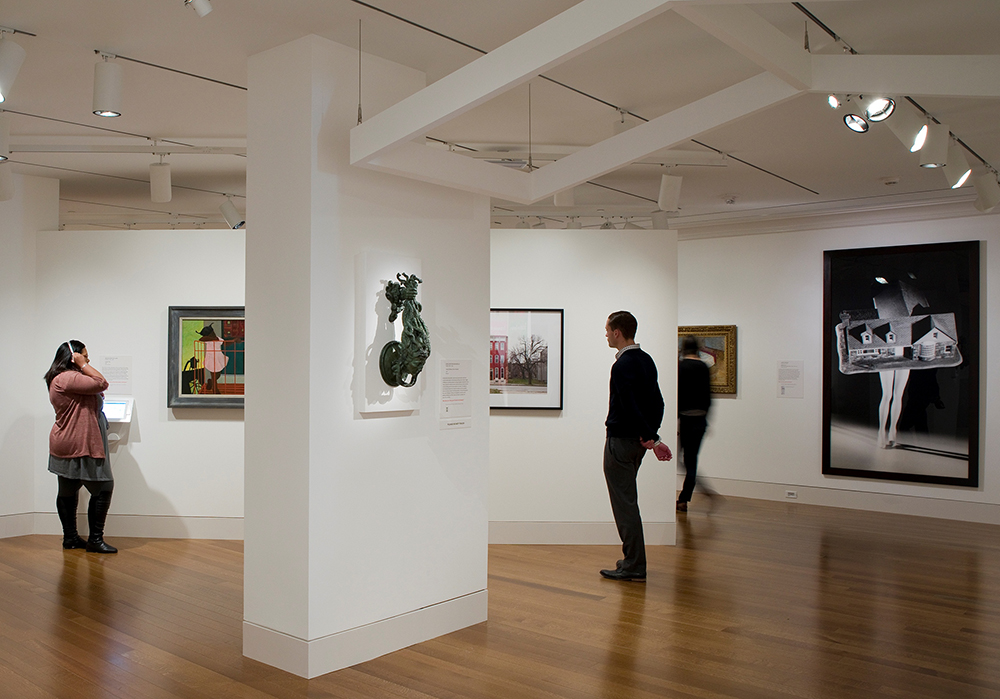
To walk through The Baltimore Museum of Art’s newest exhibit Imagining Home is to enter an immersive experience.
Using works from throughout the museum’s collection, the exhibit was designed to simulate a home—an elaborate bronze, French door knocker is one of the first works visitors encounter. One section explores domestic interiors, as paintings and photographs mingle with objects such as a cutting board and a shower curtain—which you can touch—that have been elevated into art. Above certain works, speakers play sounds recorded in the place where the art was made—street noises outside of a house, for example.
“Home is something you don’t have to be an expert at,” says Gamynne Guillotte, the BMA’s director of interpretation and public engagement. It’s ideal to get people thinking about questions such as, “How do I define home?”
The exhibit opens Sunday, and is a part of new education center that is the last piece in a $28 million renovation that aimed in part to connect the museum with a larger audience. The museum’s board of trustees chair announced Tuesday that the new center would bear the name of benefactors Patricia and Mark Joseph, who have given $3 million to the museum—one of the largest gifts in the BMA’s history.
The senses are further stimulated in an adjoining room, where visitors are encouraged to interact with a work resembling a room divider, which the museum calls a “shed.” Here, various common household objects are arranged, all colored a pristine white.
On Tuesday, as visitors at an exhibit preview used a broom to sweep imaginary dirt and picked up a frying pan off a pretend stovetop, curators remarked that they couldn’t wait to see how visitors would interact with art that seemed so familiar.
Such a universal topic is ideal to unlocking each person’s creativity, and to further stimulate that, the center and exhibit will continue to evolve, says Jay Fisher, deputy director of curatorial affairs, and one of the BMA’s interim co-directors.
“It will always be a changing space, a vital space where you can’t say, ‘Oh, I’ve seen that before.’”
Hear the sounds recorded at the home that was once Sophia’s Dairy in Harford County, pictured below in Frances Benjamin Johnston’s gelatin silver print from 1936-1937.
